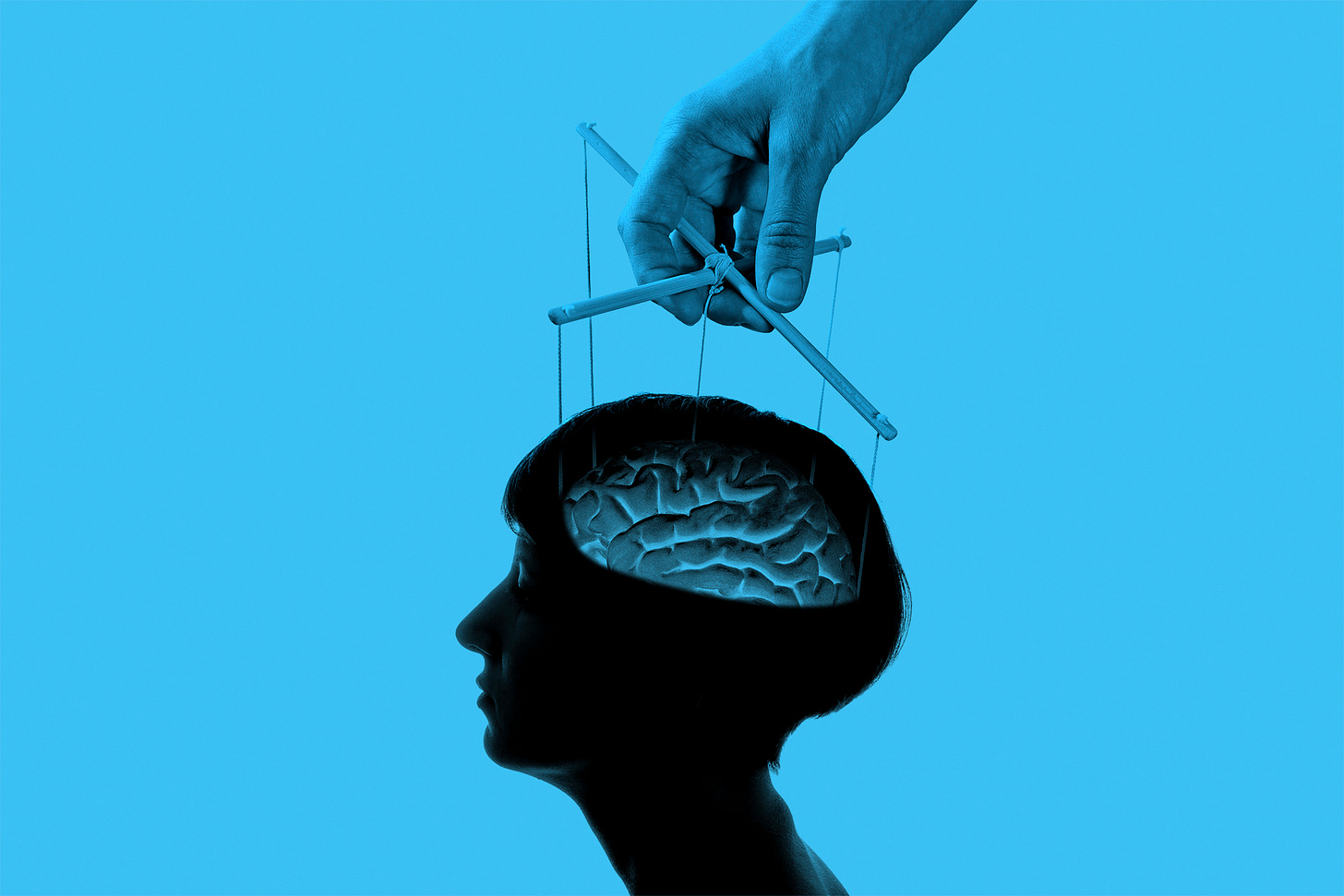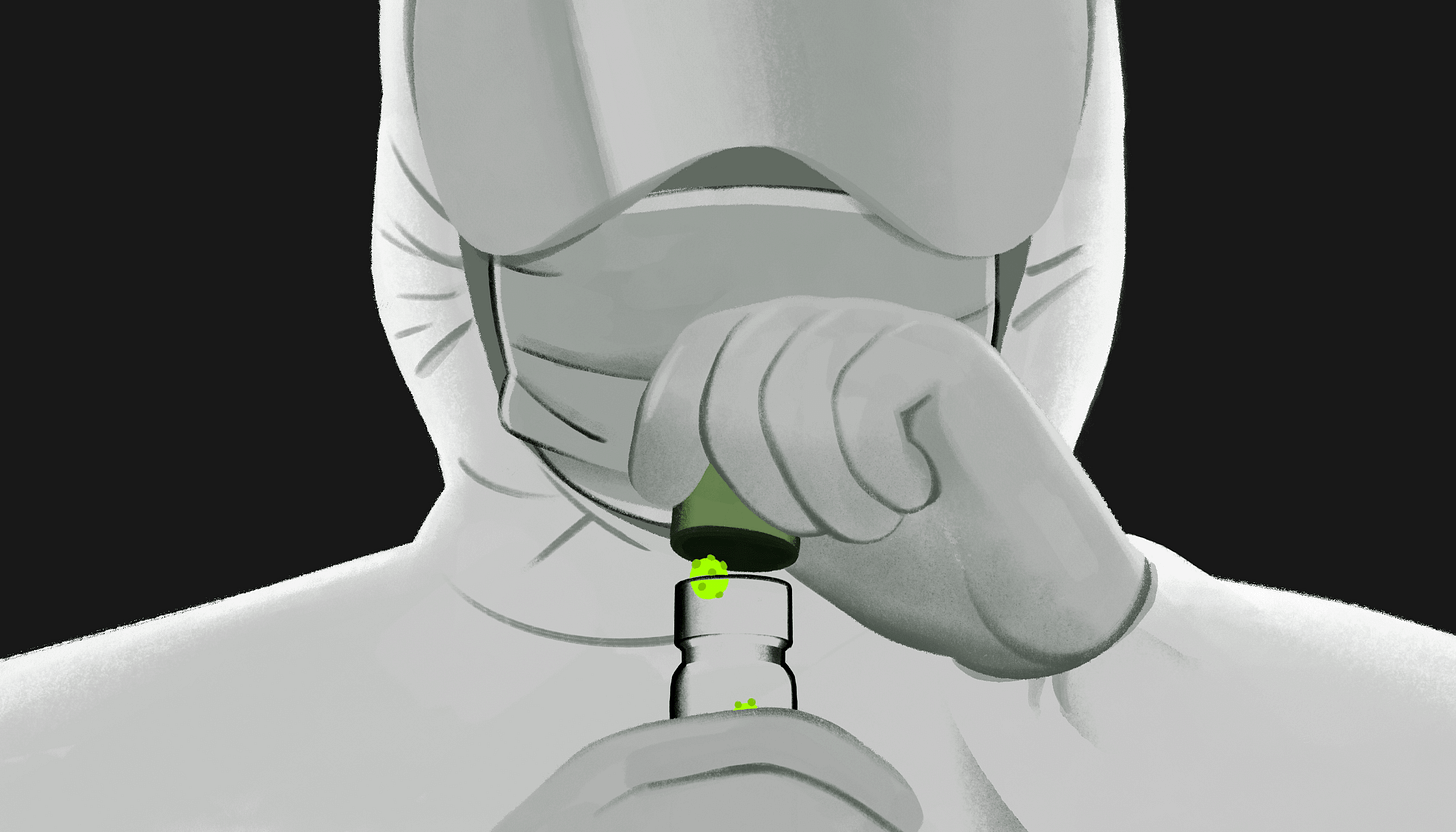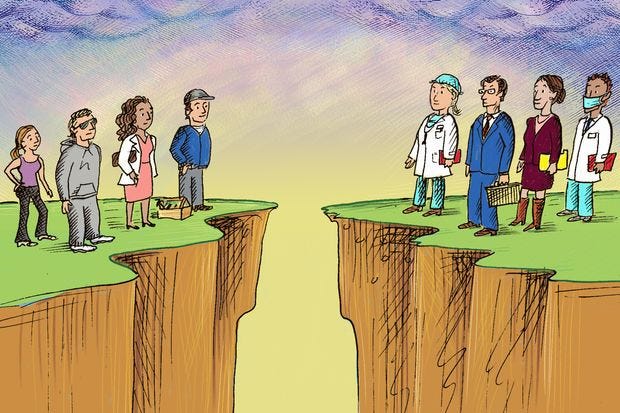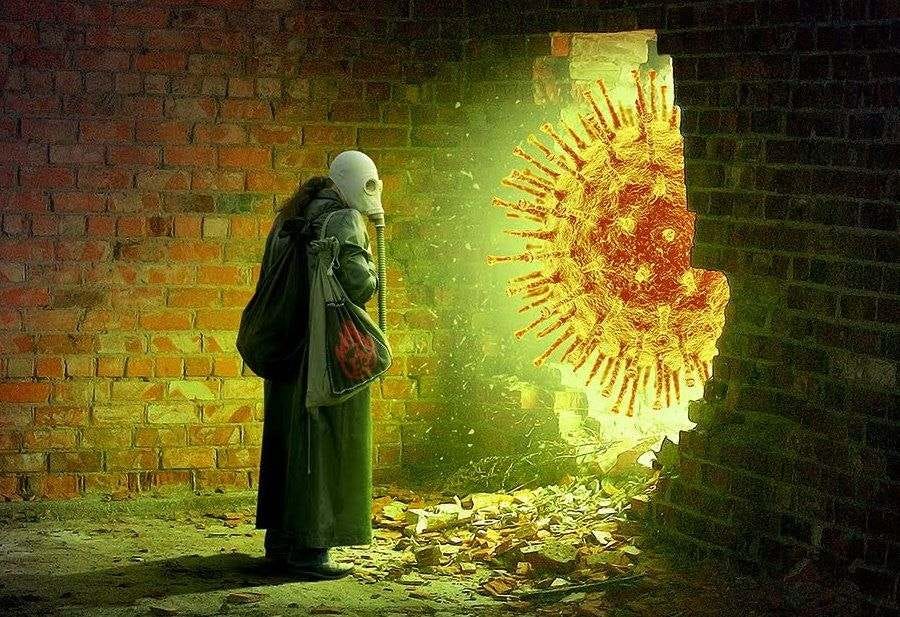Beyond the Lab Leak: Deconstructing a Modern Myth
Examining viral phenomena through the lens of natural systems
The COVID-19 lab leak hypothesis has gained significant traction recently, gradually becoming a prevailing narrative in discussions about the pandemic's origins. However, to understand this phenomenon, we must dissect it and examine why such explanations, despite their flaws, can take root in modern society.
A History of Similar Narratives
The lab leak theory isn't novel – it's part of a recurring pattern in how society responds to complex medical and scientific challenges. This pattern became prominent three decades ago during the Lyme disease crisis, when theories circulated that the causative bacteria was a government-engineered bioweapon.
The medical establishment's dismissal of chronic Lyme disease sufferers – treating their symptoms as psychological rather than physical – created a perfect storm. Patients, feeling invalidated and gaslit by healthcare professionals, channeled their frustration into a search for alternative explanations. This emotional charge transformed into a campaign for validation and justice.
The Puglia Parallel
A striking parallel can be found in Italy's Puglia region, home to ancient olive groves that have endured millennia of challenges. The trees' twisted trunks—some radiocarbon-dated at more than 2,500 years old—are as fundamental to the landscape as the castles and the sea. They have persisted through centuries of invasions, wars, diseases, famine, droughts and depressions. No matter how bad things have ever gotten, the orchards have always provided promise for the future.
When these legendary trees began dying from Xylella fastidiosa infection, the scientific response met fierce resistance. Despite evidence-based recommendations to contain the outbreak by removing infected and surrounding trees, local opposition flourished.
The community's reaction was telling: Scientists were accused of deliberately spreading the disease to secure research funding, while EU-mandated containment measures were portrayed as distant bureaucrats' heavy-handed interference. These ancient olive trees, representing both economic livelihood and cultural heritage, became the centerpiece of a conflict between scientific expertise and local trust.
This pattern of mistrust has found fertile ground in the modern information era. The internet and social media have fundamentally transformed how people seek and process information about complex issues. Those searching for answers now readily find communities that share their skepticism, creating echo chambers that amplify alternative explanations. Within these spaces, isolated pieces of information can be connected to form compelling but potentially misleading narratives, while confirmation bias is reinforced through selective information consumption.
The democratization of information, while valuable in many ways, has created an environment where speculative hypotheses can rapidly transform into perceived truths. This transformation occurs through the piecing together of disparate facts – often without proper context or scientific rigor. The speed and ease with which these narratives can spread have made it increasingly difficult to distinguish between well-supported scientific conclusions and appealing but unfounded explanations.
The Underlying Pattern
What emerges is a consistent cycle:
A complex problem arises that affects people directly
Initial scientific responses are perceived as inadequate or dismissive
Affected communities, feeling unheard, seek alternative explanations
The information age provides tools to construct and spread these alternative narratives
These explanations gain credibility through shared frustration and mutual reinforcement
This pattern helps explain why the lab leak theory, like its predecessors, has found such a receptive audience in our modern information landscape. It reflects the level of distrust in society
The Psychology Behind the Consensus
What we're witnessing with the lab leak theory's growing acceptance isn't just about scientific debate – it's a manifestation of collective psychological needs. The theory's rise to near-consensus status follows a familiar pattern, driven by humanity's reaction to an unprecedented disruption of daily life. This disruption, seemingly disproportionate to the initial threat, created a profound psychological dissonance that demands resolution.
The appeal of the lab leak theory lies in its ability to satisfy two fundamental psychological needs:
The desire for emotional catharsis through assigning blame
The quest for cognitive peace in the face of overwhelming anxiety
In our modern information ecosystem, these psychological needs shape how we process and validate information. The vast ocean of available data becomes a “buffet” where individuals can select facts that align with their emotional state, rather than pursuing objective truth. The validity of these selected facts is often measured not by their scientific merit, but by how effectively they soothe our collective anxiety and provide a sense of understanding.
Yet this approach to understanding reality reveals a deeper truth: it exposes our collective discomfort with uncertainty. Rather than acknowledging the limits of our knowledge, we often invest tremendous energy in constructing certainty where none exists. This represents a kind of intellectual shortcuts – a preference for compelling narratives over the more demanding path of rigorous investigation.
The emerging consensus around the lab leak theory thus becomes a case study in how modern society handles uncertainty. It demonstrates our tendency to favor expedient explanations over the more challenging path of sustained scientific inquiry. This preference for quick, emotionally satisfying answers over methodical investigation reflects a broader cultural shift toward instant gratification, even in our pursuit of knowledge.
In the next part I will break down the paradigm and examine it’s comprising parts.
Part I: Viral Inconsistencies & Loss of Interdependence
Over recent decades, medical science has developed increasingly sophisticated tools to explore the microscopic world, viewing this capability as the final frontier before the invisible. This technological advancement created a seductive illusion: by identifying the smallest visible particle, we believed we'd found definitive "culprits" for previously unexplainable phenomena. This apparent precision offered comfort – no longer would we need to wrestle with invisible forces (like the historical concept of miasma); instead, we had tangible entities to study and combat.
Alongside this technical evolution, we've experienced an explosion in scientific vocabulary. The English language now contains roughly half a million technical terms, creating an illusion of knowledge. This, inadvertently, has created the illusion of knowledge. We’re now on the other side of the efficiency arc because the usage of complex jargon has become the goal rather than the means. The more we use complex jargon the more it gives the listener a sense of expertise and irrefutable authority, which are illusions nonetheless.
If one breaks down our scientific paradigms down to their components, however, they realize that we merely exchanged one demagoguery for another. Viruses are not alive! Since they are not alive they cannot have discriminatory characteristics of contagion. They have no means of locomotion, detection, transmission and procreation of their own.
The moment we transfer them to an isolated, sterile lab environment and cultures them on a Petri dish, we remove them from the “orchestrating whole” - the host body. By that, we begin to distort their function and with it, one’s conclusions. The fact that scientists have been working on synthetically engineered viruses in labs doesn’t not translate to the feasibility of manmade pandemics.
Mechanism of Contagion
Let us pause to acknowledge a fundamental truth: science still cannot fully explain viral infection. Modern science maintains a peculiar duality in its approach to viruses – viewing them as threats when it serves a particular narrative, while disregarding their essential role in life and evolution when it doesn't. At any given moment, billions of viruses exist within and outside the human body, with at least 320,000 different strains found in the gut alone.
This binary perspective stems from the sterilization of modern science over the past 150 years. According to the current paradigm underlying all our virology and epidemiological models (The Germ Theory), epidemics spread through microscopic, non-living particles that "jump" between animals and humans, directly causing infection and disease.
The illusion of viruses spreading is just that, an illusion. It is impossible to keep germs away from our bodies. It’s impossible not to be around viruses all the time. Supposedly the virus was spread via spray, why does it always appear in cycles in the population? If you study the annual graphs of flu, you see that there is a major uptick in viral outbreaks every 4-6 months. This is typical of the body of animals because they work in conjunction with cyclical climatic conditions. They are inseparable.
The variants of viruses produced in labs do not have usage as a contagious entity. Those particles can only be injected or inserted into the body, wherein they may influence cells as foreign matter. External viruses are merely treated as toxic debris by the ecosystem of a whole body. They would be no more toxic than wood dust, or wood smoke.
Nature is not a Pussycat
Nature is not as weak as we try to portray it. Nature is based on balance systems. Readily, there are many "buffers'' within us that prevent an exponential contagion. We pass new "viruses" among ourselves all the time, far more often than all of human history combined. Now moving in between diasporas and a myriad of societies daily, thanks to the development of aviation and transportation, have only intensified the spread exponentially. And yet, outbreaks of epidemics are negligible compared to the times when we did not mix as often as we do today. In other words, viral or bacterial lab leakage, precipitating contagion across 200 countries as a ”wildlife scenario” is so far-fetched and disconnected from reality.
Science has claimed that a virus has indiscriminate actions. This means the virus is supposed to be invading all cells in the body equally, but this is not the behavior that we observe. The reality is viruses are very specific, and they specifically dissolve specific tissues in the body, and they do this with the assistance and guidance of antibodies.
If viruses were not discriminatory and specific agents created by cells, we would observe everyone who gets infected with viruses all have the same level of sickness, but this is not what happens. This is a direct contradiction of virology itself because if viruses are contagious agents that come from outside the body, the virus would not care what level of health of the immune system, or of the body, that person had (therefore, this shows an intelligent connection between viruses and the body).
Consider our modern world: despite unprecedented global movement between countless populations and countries, facilitated by advanced transportation, epidemic outbreaks remain surprisingly limited compared to historical periods of less human mixing. This reality makes the notion of a lab-leaked virus causing synchronized contagion across 200 countries seem increasingly implausible.
Antoine Béchamp's alternative 'Terrain Theory' offers a more holistic perspective, proposing that microorganisms and viruses originate within the body rather than invading from outside. This framework better explains several paradoxes during Covid-19 that challenge the lab-leak paradigm:
South Africa accounts for about 50% of Africa's COVID-19 deaths despite having less than 5% of the continent's population. This pattern defies explanation through conventional factors like ethnicity, age demographics, health burdens, economic activities, diagnostic capacity, or socio-political factors.
Neighboring Botswana, sharing similar ethno-cultural groups, age demographics, health challenges (HIV/AIDS, tuberculosis, obesity), and economic activities (mining, tourism), experienced vastly different outcomes despite these parallel conditions.
Japan, despite having the world's highest elderly population and receiving many travelers from the outbreak's epicenter, avoided severe COVID-19 outbreaks while implementing limited social distancing. This anomaly, dubbed the "Unknown Japanese X factor," further challenges conventional contagion models.
The belief that we can sterilize both body and environment of bacteria/viruses reflects a deeper psychological sterilization that has taken root in human consciousness over the years. This mindset emerges from mechanistic science – a product of complete identification with rational thought processes that reduce three-dimensional phenomena to two-dimensional constructs, seeking the shortest distance between two points while overlooking the complexity of natural systems.

The Information Age Paradox
A simpler, less sensational explanation for global "contagion" emerges when we consider that this is humanity's first pandemic in the age of ubiquitous information, characterized by what I call "dumbphone culture." We find ourselves in an unprecedented reality where humanity remains perpetually connected to a "Collective Cloud Machine."
Historical perspective proves illuminating. Previous epidemics – SARS, Ebola, Swine flu – didn't trigger such extreme responses, largely due to technological limitations of their eras. The absence of smartphones meant no instant video sharing, limited social media presence, and no constant stream of personal "enlightened" contributions masquerading as conversation.
Paradoxically, these technological limitations served as a protective buffer. The inability to transfer data in real-time actually shielded human consciousness from constant bombardment of fear and uncertainty. Today's information environment fragments attention spans, pulling consciousness in multiple directions simultaneously, reducing the average person to a state of perpetual anxiety and reactivity.
COVID-19 marked the first pandemic where virtual reality superseded actual reality. In the virtual sphere, 99% of humanity appeared to be dying; in reality, the number was less than 0.01%. The ease of instantly aligning everyone to the same single pattern proved unprecedented.
Beyond Conspiracy
Contrary to popular theories, the evidence suggests that pharmaceutical companies opportunistically exploited the crisis rather than orchestrating it. COVID-19 exposed pre-existing systemic corruption, ethical decay, and an insatiable drive for profit and influence within our institutions.
The laboratory spillover theory emerges as another distraction – not necessarily intentional, but stemming from our collective inability to distinguish between fertile and sterile information. The rapid transmission of truncated information, lacking context or completion, generates profound confusion. Combined with diminished attention spans and intellectual curiosity, we've created an environment where, as the saying goes, rumors fly while truth crawls. The devil, as always, resides in the overlooked details.
Mechanistic Science & Closed Systems
Bruce Lee's insight that "Every system is man-made. Therefore, Man is always above any system" highlights a modern irony: we've inverted this hierarchy, placing systems above their creators. Over time, humanity has sacrificed multidimensional understanding for the worship of linear datasets rooted in rational thinking, giving rise to mechanistic science.
The human mind encompasses eight dimensions of intelligence, with rational intelligence – focused on pattern differentiation – occupying the lowest level. Yet our educational system fixates exclusively on this single dimension. The rational mind dissects observations into countless fragments, seeking singularity through forced connections and linear solutions. This reductionist approach fails to recognize that singularity itself is illusory.
This limitation explains why we haven't cured cancer and likely won't through the "magic bullet" solutions we envision. The human body isn't a simple jigsaw puzzle reducible to binary good/bad categorizations. The promotion of laboratory models over field observations further distances us from understanding biological complexity.

Modern science has increasingly adopted closed system thinking – treating systems as isolated from energy or matter exchange with their environment. Yet in nature, with few theoretical exceptions, all systems are open, constantly interacting with their surroundings. The human body is an open system, continuously striving for environmental equilibrium.
The problem intensifies when science forces complex phenomena into closed-system frameworks. Equations must satisfy rational mind constraints; when they don't fit our closed reality loops, we simply excise the inconvenient parts. This practice, which mathematicians call "renormalization" (dubbed "Dippy hocus pocus" by physicist Richard Feynman), pervades modern scientific thinking.
This systematic reduction has created millions of scientists who have become victims of their own closed systems, rigidly conditioned to identify with these frameworks as absolute truths. Modern science and institutionalized religion have become two sides of the same coin – both fundamentally based on faith rather than genuine inquiry.
The real issue remains unaddressed. Our lack of understanding about what truly mitigates contagion and illness has been obscured by the constant regurgitation of flawed explanations. This intellectual stagnation has led to the mass formation of germaphobia and an addiction to ineffective band-aid solutions that, even in best-case scenarios, fail to address root causes.
The consequences of decision-making based on such mechanistic outlooks have been catastrophic. The pandemic response demonstrates this clearly – seventy years of social and economic progress undermined in just two years. More troubling is how this mechanistic thinking creates a perverse dynamic where well-intentioned individuals unknowingly perpetuate harmful paradigms.
The lab-leak theory exemplifies this mechanism of misinformation. Regardless of which side one takes in this debate, focusing on the lab-leak narrative keeps attention fixed on an underlying false premise. Even those believing themselves to be on the right side of history inadvertently cement an untenable paradigm in the collective consciousness, perpetuating cycles of confusion and misunderstanding.
Real progress requires more than attacking symptoms – we must confront the root cause by challenging the fundamental assumptions of Germ Theory itself. Only by dismantling this flawed framework can we watch its derivative beliefs, conclusions, and ineffective measures fall like a house of cards. This clearing of conceptual debris creates space for objective investigation into the consistent patterns of contagion and the authentic and holistic nature of viruses.
Part II: Pandemics as Information Seedlings
Universal truth invariably manifests in simple terms. Every phenomenon around us can be reduced to a language accessible to all, as universal principles are inherently simple. Complexity arises not from the phenomena themselves but from our mind's distortion of observed reality, stemming from our limited understanding of mental mechanics.
The mechanism of contagion likely operates more simply than current theories suggest: Viral/bacterial pandemics serve as markers for rapid evolutionary changes within species – essentially functioning as information seedlings across the entire spectrum of Earth's organisms.
Our DNA molecule operates as a fractal antenna; its double spiral motion generates a resonance field simultaneously transmitting and receiving information. This process occurs against the backdrop of planetary magnetic field anomalies and ionospheric radiation changes, which mediate communication between organisms. (Notably, during the COVID-19 period, Earth experienced extreme heat waves that deviated from normal seasonal patterns.)
This framework suggests ongoing communication between genetics and environment, mediated by DNA and planetary conditions. Viruses may be effects rather than causes, with phenomena like COVID-19 serving as markers for resonance-induced mutations. The source emerges from "inside" rather than "outside" – whether manifesting symptoms or not, all life forms on Earth received this informational "seeding."
Evolution in Real-Time
This perspective challenges our limited understanding of evolution, which we typically view retrospectively as a lengthy, heredity-driven process. Pandemics and epidemics might instead represent evolution occurring in real-time. Our failure to recognize this stems from our fragmentary understanding of consciousness mechanics and lost appreciation for interdependence.
We lack holistic comprehension of how viruses, bacteria, and fungi serve as vectors for mutation and gene expression. Viruses might function as blueprints enabling bodies to manage elevated toxicity resulting from transformation/metamorphosis. This understanding remains obscured by our failure to educate about consciousness mechanics and mental processes.
The Animal Kingdom as Evidence
A compelling clue contradicting both planned pandemic and lab leak theories lies in observable changes in animal behavior. Post-COVID, we've witnessed radical shifts in wildlife behavior – particularly in their relationship with human habitats. Jackals and wild boars now frequent city parks, bears breach homes, snow leopards appear at doorsteps, and coyotes display unprecedented boldness toward humans. Such widespread behavioral changes cannot be engineered or explained by simplistic references to climate change.
The apparent disconnect between these phenomena and viral epidemics exemplifies our fragmented understanding. Our closed systems have subdivided reality into isolated disciplines – medicine, chemistry, physics, astronomy, economics, sociology, environmental sciences – each operating in isolation. While organizational frameworks serve a purpose, we've exceeded optimal efficiency, creating overly complex, rigid systems that impede cross-disciplinary communication.
The Signs of Transformation
The connection between COVID-19 and contemporary social phenomena becomes clearer when viewed holistically.
In three years, we've witnessed drastic changes in human psychology, belief systems, and behavior: increasing confusion, social polarization, identity crises, mass formation psychosis, rising mental illness, body dysmorphia, eating disorders, depression, and censorship. These manifestations reflect species-wide transformation affecting psychology, behavior, and biology.
Historical Patterns and Planetary Cycles
There are periods in the life of mankind which usually coincide with the beginning of the fall of societies and cultures, when the masses irreversibly lose their minds and begin to destroy everything that has been created by hundreds and thousands of years of civilization.
Such periods of mass madness coincide with geological disasters, extreme changes in the weather and similar phenomena of a planetary nature and the massive release of a very large amount of knowledge and information.
The Neolithic population collapse about 5500 years ago, which occurred over approximately 500 years in the mid-Holocene (~7000 to 5000 years ago), was temporally coupled to the last diminishment in geomagnetic field intensity. Perturbations in the geomagnetic field are coupled to mantle dynamics, which modulates changes in the solid outer layer of the earth’s mantle rock-water interactions and atmospheric carbon dioxide levels.
The geologic and geophysical conditions of the mid-Holocene are similar to the current conditions of the Holocene (the current geological epoch), namely, increased atmospheric carbon dioxide levels, polar ice melt-induced increased sea levels and terrestrial water storage.
What’s happening right now in every society anywhere in the world? Confusion, loss of common sense and mass formation. And where are we now on the line of development?! We are at the apex of the Information Age. But I want to point out that the apex of the Information Age, as an explosion of knowledge and information, is a sign to an end, not a beginning.
Right now the world believes that we are going to advance more and more in technology and A.I. but that’s only a mirage. The explosion in information and the development of technology is a sign for an end. The rug is going to be pulled under our feet at some point.
Nature's Programming
Nature appears to orchestrate these endings through resonance – seeding information that affects all subsequent developments. Current mass confusion and loss of common sense indicate this process in action. Human attempts to control these natural cycles through societal control mechanisms only accelerate chaos and dehumanization.
The fundamental issue lies in our lack of awareness combined with the vanity of believing we control nature. Our culture's attempt to conform nature to mental constructs reflects a profound misunderstanding of natural cycles.
Every beginning contains its end, and every end heralds a new beginning – a truth we ignore at our peril.

















I was only asking where faith in God fits in your very detailed analysis. I find comfort in knowing I have a connection to a higher power. One God & being merely human, I am humbly flawed & do not need to, nor could, understand all things & that does not bother me one bit. Peace.. 🙏
Trying so hard to follow, but of course limited by my human brain. Is there a higher power present in any of these deep, wandering & unmeaningful contradictive “thoughts”..?